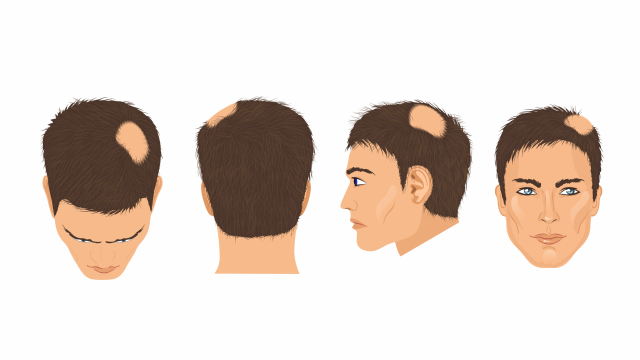Alopecia areata, also known as spot baldness, is a condition in which hair is lost from some or all areas of the body. Often it results in a few bald spots on the scalp, each about the size of a coin. Psychological stress may result. People are generally otherwise healthy. In a few cases, all the hair on the scalp or all body hair is lost and loss can be permanent.
Alopecia areata is believed to be an autoimmune disease resulting from a breach in the immune privilege of the hair follicles. Risk factors include a family history of the condition. Among identical twins if one is affected the other has about a 50% chance of also being affected. The underlying mechanism involves failure by the body to recognize its own cells with subsequent immune mediated destruction of the hair follicle.
There is no cure for the condition. Efforts may be used to try to speed hair regrowth such as cortisone injections. Sunscreen, head coverings to protect from cold and sun, and glasses if the eyelashes are missing is recommended. In some cases the hair regrows and the condition does not reoccur. In others hair loss and regrowth occurs over years. Among those in whom all body hair is lost, less than 10% recover.
About 0.15% of people are affected at any one time and 2% of people are affected at some point in time. Onset is usually in childhood. Males and females have the condition in equal numbers. The condition does not affect a person's life expectancy.

